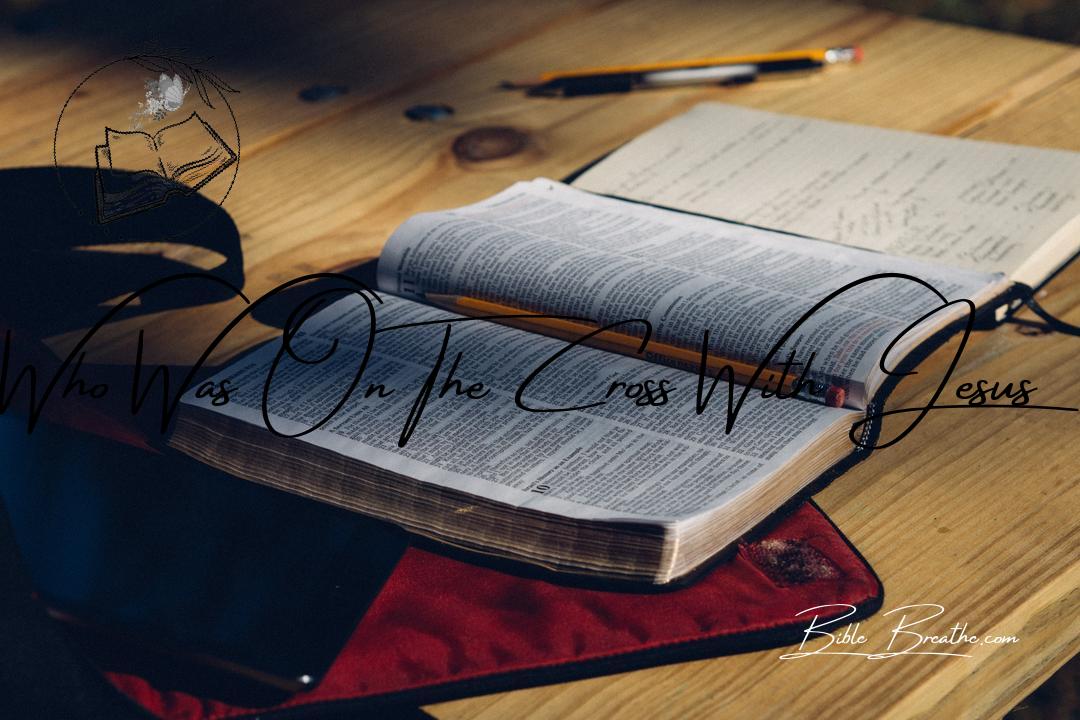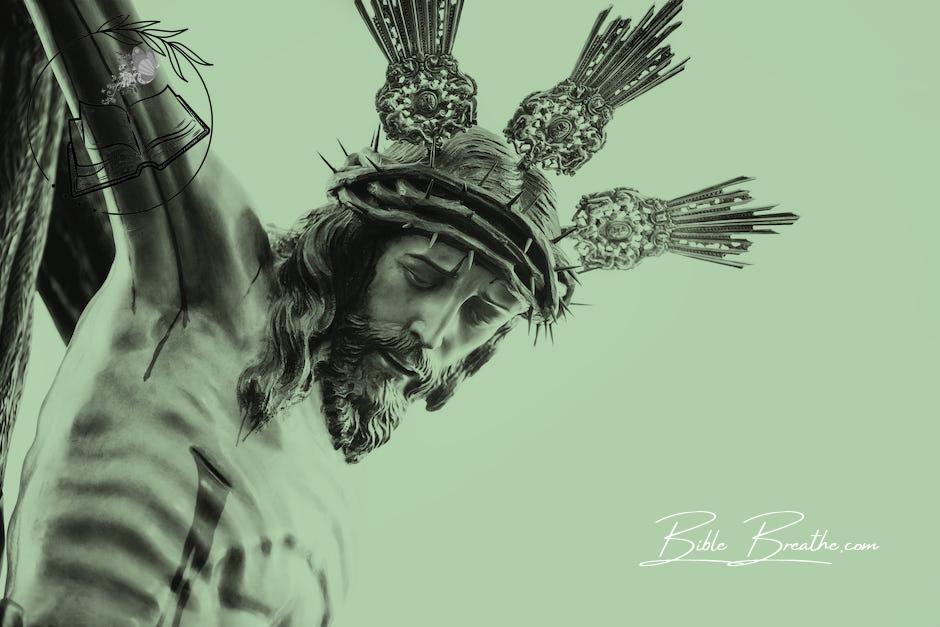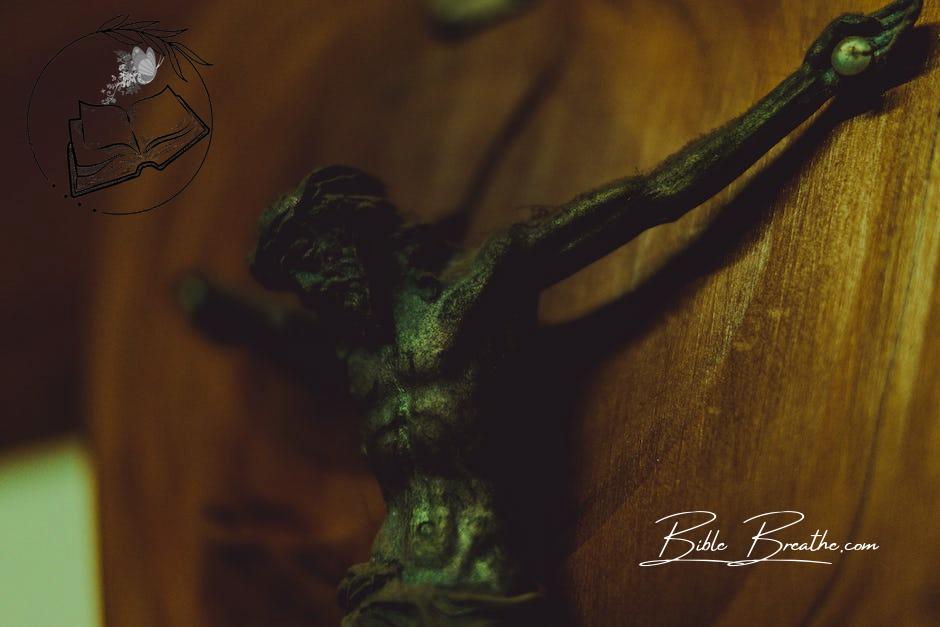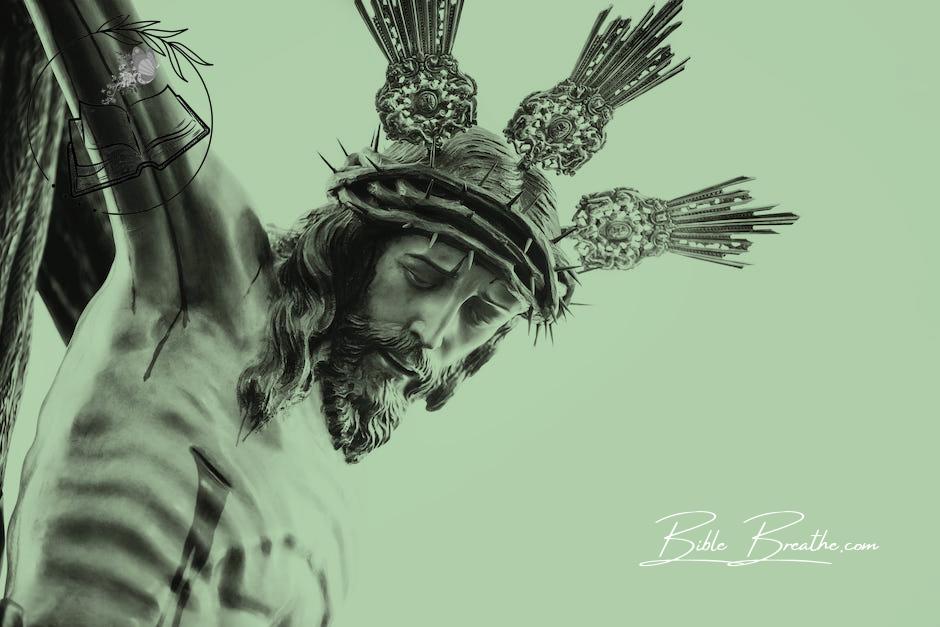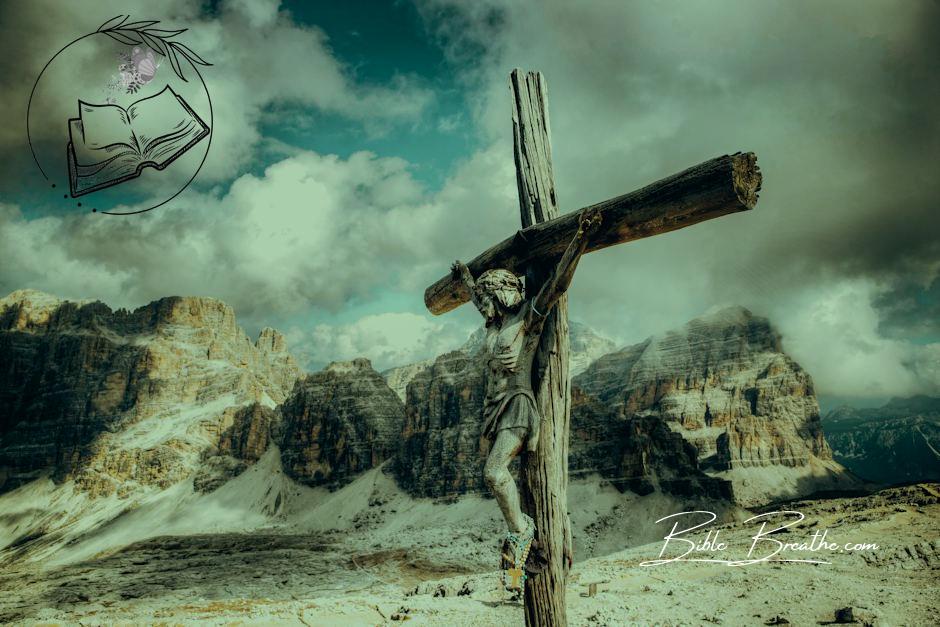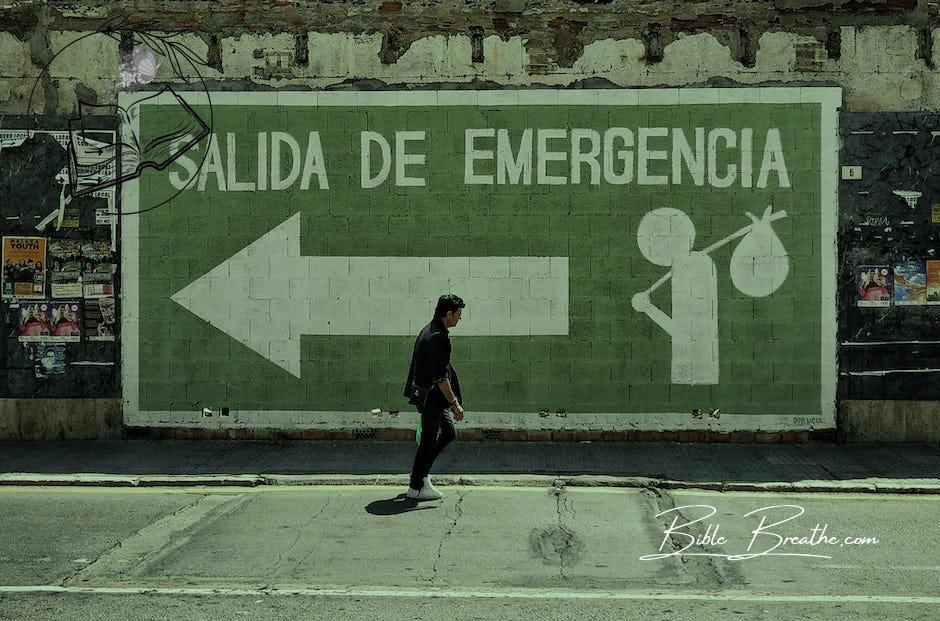Who hung beside Jesus on that cross, fam?
This ain’t just some history lesson; it’s a deep dive into our faith’s core.
Imagine you’re in a courtroom, and it’s not just the Roman gibbet—it’s your soul on the line.
You got Jesus, the Messiah, up there, but who’s rollin’ with Him?
The Gospels, each tellin’ their story, like eyewitnesses at a life-changing event.
This ain’t about some regular punishment; it’s about saving souls.
The one next to Jesus, that’s the real deal, a key to our faith.
Was it a crook, a sinner, or a sign of redemption?
Knowing who’s on that cross unlocks powerful truths.
Let’s dig deep into the history, theology, and connect it to salvation, redemption, and the heart of our faith.
Buckle up as we uncover who was ridin’ shotgun with Jesus, ’cause it’s all about understanding our faith’s heart, for real.
🙏🏽
Key Takeaways
- Understanding who was on the cross with Jesus holds profound significance in the Christian faith. It is a pivotal moment in the story of Christ’s crucifixion, carrying deep theological and historical meaning.
- The presence of two criminals alongside Jesus on the cross highlights the fulfillment of prophecies concerning the Messiah. Jesus, being “numbered with the transgressors,” demonstrates His identification with humanity’s sinful condition.
- The theological significance of this event lies in the redemptive work of Christ. Jesus’ crucifixion was not just a historical event but the central act of God’s plan for the salvation of humanity. It represents the atonement for sins and the means by which believers can find forgiveness and reconciliation with God.
- From a historical perspective, the crucifixion of Jesus and the criminals serves as a well-documented event in ancient literature, validating the existence of Jesus and the events surrounding His life and death.
- Ultimately, understanding who was on the cross with Jesus deepens one’s appreciation of the depth of God’s love and the sacrificial nature of Christ’s mission. It underscores the core message of Christianity, offering hope and redemption to all who believe.
Unveiling the Cross: Jesus’ Companions in Suffering
Photo modified by BibleBreathe.com. Original photo by Alem Sánchez on Pexels
When we dig into the intense crucifixion scene of Jesus, we’re stepping into a moment of deep agony and pivotal beliefs in Christianity.
Picture this like tuning into a historical drama, where the characters and the situation have an air of mystery, yet their impact runs profoundly.
Crucifixion: A Grisly Practice of the Past
To get who was on the cross with Jesus, we first need to get into the historical vibe of crucifixion during his time.
It wasn’t merely an execution method; it was a horrifying and repugnant spectacle, deliberately designed to inflict shame and horror.
The Romans used it as the ultimate punishment, reserved for the most heinous crimes, often seen as offensive under Jewish law.
Imagine this: on the busy streets of ancient Jerusalem, a Roman gibbet stands tall, a symbol of might and terror.
And on that gibbet, Jesus, the Messiah and Savior as per Christian belief, hung alongside others, condemned to this gruesome fate.
The Few Hints in the New Testament
Now, you might be wondering why the New Testament doesn’t give us a full-fledged guest list of those on the crosses with Jesus.
It’s a bit like reading an exciting mystery novel where some crucial details are left to your imagination.
The Gospel authors share various perspectives, emphasizing the theological importance rather than just names.
They zoom in on the message of salvation, redemption, and atonement through Jesus’ sacrifice.
So, while we don’t have a full cast of characters, the central theme of faith, grace, and the hope of resurrection shines brightly.
“For God so loved the world, that he gave his only begotten Son, that whosoever believeth in him should not perish, but have everlasting life.” – John 3:16 (KJV)
In this unfolding drama of the crucifixion, the identities of those who shared the crosses with Jesus might remain somewhat veiled, but the message of salvation and grace remains brilliantly illuminated.
Sharing the Cross: A Tale of Redemption and Grace
Photo modified by BibleBreathe.com. Original photo by Francesco Paggiaro on Pexels
As we journey back to that fateful day on the hill called Golgotha, we find ourselves asking, “Who bore the weight of the cross with our Savior, Jesus Christ?” It’s a pivotal question that not only tugs at our hearts but unravels a tale of redemption and grace amidst the brutality of crucifixion.
The Cross: A Symbol of Agony and Grace
The cross, a symbol etched in history, was more than just two beams of wood.
It was a symbol of agony, a stage for the greatest sacrifice the world would ever know.
The Romans, known for their expertise in torture, had perfected this grotesque form of execution.
The cross stood tall, a ghastly reminder of humanity’s capacity for cruelty.
Imagine this: a cross shaped like a capital “T” or a Latin “†.”
A design carefully chosen for maximum suffering, arms outstretched, vulnerability exposed, amplifying the shame and torment.
It wasn’t just about ending a life; it was about public humiliation, a display for all to witness.
The Man Beside the Lamb
Now, let’s peer into the heart of the matter: who bore the cross alongside our Lamb, Jesus?
The Gospels illuminate this sacred scene.
Two souls, condemned for their deeds, were affixed to crosses on either side of Jesus.
They were not merely common criminals but individuals who faced the gravest of punishments for their actions.
One of these men, often deemed the “good thief,” stood at the threshold of eternity.
In his final moments, he grasped the truth of Jesus’ innocence and divinity.
In a breath of repentance, he turned to the Savior, placing his faith and hope in the innocent man dying beside him.
Jesus, in His boundless grace, extended the promise of salvation, declaring, > “Verily I say unto thee, today shalt thou be with me in paradise.” – Luke 23:43 (KJV)
This poignant exchange at the crucifixion reverberates through the annals of time, encapsulating profound theological truths of redemption, atonement, and God’s immeasurable grace.
It serves as a beacon, illuminating the possibility of salvation and repentance, even in our darkest hours.
Today, as we stand on the precipice of this historical moment, we’re urged to reflect on our own lives.
Do we, like the repentant thief, acknowledge our transgressions, embrace faith, and welcome the outstretched hand of grace, even when our own crosses loom large?
The crucifixion, a tableau of sacrifice and redemption, continues to echo through generations, inspiring countless souls on their pilgrimage of faith and deliverance.
Peering into the Crucifixion: The Nails That Held Jesus
Photo modified by BibleBreathe.com. Original photo by Alem Sánchez on Pexels
As we journey deeper into the agonizing crucifixion of Jesus, let’s focus on a painful aspect: the nails.
These were no ordinary nails you’d find in your toolbox.
They were instruments of torment, akin to modern-day restraints, but far more horrifying.
Nails of Agony
The spikes used in crucifixion were more than mere nails; they were long, stout, and designed to impale the victim.
Picture them like railroad spikes, but with a sinister purpose.
Their aim was not just to keep the person in place but to intensify pain and suffering.
Imagine the scene: a Roman executioner, following the orders of the authorities, carefully driving these spikes through the flesh and bone of the condemned.
It’s a chilling image, underscoring the cruelty and humiliation tied to this form of capital punishment.
Insights from the Sands of Time
To add a historical touch, consider archaeology as a detective’s tool.
Archaeological evidence of crucifixion has been unearthed, shedding light on the brutal reality of this practice.
These findings are like puzzle pieces helping us reconstruct the past, similar to how a detective gathers clues to solve a mystery.
Through these archaeological discoveries, we establish a tangible link to the events of the past.
They remind us that the crucifixion of Jesus wasn’t just a theological concept; it was a real historical event with tangible, physical consequences.
In this exploration of the crucifixion, we encounter the nails, not as ordinary objects but as symbols of unimaginable suffering.
They remind us of the sacrifice made and the theological significance of Jesus as the Savior.
“He himself bore our sins in his body on the cross, so that we might die to sins and live for righteousness; by his wounds, you have been healed.” – 1 Peter 2:24 (KJV)
The nails, with their historical and theological resonance, become a powerful symbol of redemption, atonement, and grace, central to the Christian faith.
The Cruel Cross: Unveiling the Agony and the Savior
Photo modified by BibleBreathe.com. Original photo by Andrea Piacquadio on Pexels
Let’s delve deeper into the darkest hours of history, where suffering reached its zenith on the brutal stage of the cross.
Our focus now sharpens on the grim methods employed to prolong the torment of those condemned to this excruciating fate.
It’s a ghastly chapter that starkly contrasts the very essence of salvation and grace embodied by Jesus.
Tactics of Suffering Prolonged
Crucifixion, a monstrous invention of agony, was engineered not just for ending lives but for drawing out suffering.
The Roman executioner’s tool, with its malevolent design, aimed to wring every drop of pain from its victims.
Nails pierced wrists and feet, an act that not only tore through flesh but also prevented swift release into eternity.
It was a punishment carefully calculated to extend anguish over a prolonged period.
In this grim tableau, a particularly sadistic technique emerged—the sedecula, a small peg at the base of the cross.
Seemingly inconsequential, it played a sinister role.
The crucified were forced to bear their weight on this peg, each breath a laborious struggle, each moment a crescendo of agony.
Grace Amidst the Abyss of Agony
In the heart of this brutality, we find the crux of Christian faith: the crucifixion of Jesus Christ.
He, the Messiah and the ultimate Sacrifice, chose to endure this appalling fate willingly.
His sacrifice symbolized redemption, atonement, and grace.
Amidst the horrors of the crucifixion, let’s embrace the profound message of the Gospel.
The crucifixion stands in stark contrast to the themes of salvation, repentance, and faith.
Even in the face of unspeakable cruelty, Jesus’ words resonate with eternal truth, > “For God so loved the world, that he gave his only begotten Son, that whosoever believeth in him should not perish, but have everlasting life.” – John 3:16 (KJV)
This repugnant crucifixion, with all its obscene elements, serves as a powerful reminder of the lengths to which God was willing to go, showcasing the immense grace and salvation offered to humanity.
It beckons us to reflect on our own lives and the grace freely extended to us.
As we peer into the gruesome techniques employed to prolong suffering in crucifixion, we find a somber backdrop against which the brilliance of Jesus’ sacrifice shines brighter, offering hope and redemption to all who believe.
The Crucifixion Enigma: Who Shared the Cross with Jesus?
Photo modified by BibleBreathe.com. Original photo by Alem Sánchez on Pexels
As we press on in our exploration of Jesus’ crucifixion and those who bore the cross alongside Him, we encounter a perplexing question: what led to their deaths on the cross?
It’s a bit like unraveling a medical enigma, where the symptoms are clear, but the root cause is a matter of discussion.
The Debated Path to Death
Crucifixion was a brutal form of capital punishment, presenting a unique set of challenges.
Over history, scholars and theologians have debated the precise reasons for death during crucifixion.
Some argue it was due to asphyxiation, comparable to someone suffocating on dry land.
Others emphasize the excruciating pain and shock as primary factors.
Consider this: picture being in a scenario where every breath is a struggle, where you must push up on the nails piercing your flesh just to get a gulp of air.
It’s a situation intertwining physical agony with the mental torment of knowing your imminent fate.
The Body’s Reaction: A Physiological Insight
To grasp this better, let’s delve into the physiological effects of crucifixion.
It’s somewhat like examining how extreme conditions impact the human body, akin to a scientist studying how the body responds to stress.
Crucifixion exerted immense strain on the victim’s body.
Hanging on the cross for an extended duration led to exhaustion and dehydration.
The body’s weight hung on the nails, causing agonizing pain and making breathing an arduous task.
Over time, a combination of factors like shock, blood loss, and asphyxiation could culminate in death.
In this crucifixion narrative, the cause of death holds theological significance.
It symbolizes the sacrifice, suffering, and ultimate redemption central to the Christian faith.
“For the wages of sin is death, but the gift of God is eternal life in Christ Jesus our Lord.” – Romans 6:23 (KJV)
So, while the exact cause of death remains a topic of debate, the profound message of salvation and grace through Jesus’ crucifixion stands as a cornerstone of Christian belief.
The Crossroads of Agony and Grace: Jesus and His Fellow Crucified
Photo modified by BibleBreathe.com. Original photo by eberhard grossgasteiger on Pexels
We journey through the annals of history to a time when the cross stood as both a means of execution and a gruesome deterrent.
This brutal practice, though barbaric and repugnant, held a dark place in the ancient world, sending a harrowing message to all who dared transgress.
The Grisly Reminder
Crucifixion went beyond a mere method of punishment; it was a public proclamation.
The Roman gibbet, with its grotesque design, sought not only to end lives but to deter.
It stood as a menacing display, meant to strike fear and instill obedience in the hearts of onlookers.
Picture it: a society where the crucifixion was a regular occurrence.
The mere sight of a cross served as a chilling reminder of the consequences of defying the law.
It stood as a visual testament to Roman dominion and the cost of defiance.
Tales of Mass Crucifixions in the Past
To drive the deterrent message home, history recounts chilling tales of mass crucifixions.
One haunting example lies in the crucifixion of 6,000 slaves during the Spartacus revolt.
This grotesque spectacle aimed not just to punish rebels but to send an icy warning to any contemplating rebellion.
In the backdrop of Jesus’ crucifixion, we witness a similar use of this horrifying practice.
His crucifixion wasn’t a solitary event but happened alongside two criminals.
It was a spectacle of degradation and capital punishment, intended to quash any sparks of rebellion.
A Deeper Theological Truth
Yet, amid this gruesome history, Jesus’ crucifixion carries a profound theological message.
It symbolizes not only punishment but redemption, not just cruelty but grace.
It stands as a testament to God’s readiness to extend salvation to humanity, even in the face of such brutality.
As we contemplate the historical application of crucifixion as capital punishment, we’re reminded of the transformative power of the Gospel.
It declares that even in the darkest corridors of human history, there exists hope, redemption, and the opportunity for salvation.
In the crucifixion, we encounter a perplexing blend of horror and grace, a vivid reminder of the cruelty of the ancient world and the enduring message of salvation and faith.
Crucifixion Amidst the Siege of Jerusalem: Who Shared the Cross with Jesus?
Photo modified by BibleBreathe.com. Original photo by Zac Frith on Pexels
As we delve deeper into the crucifixion of Jesus and those who shared the cross with Him, we cannot overlook the historical canvas of the siege of Jerusalem.
It’s akin to peering into a tumultuous chapter of history where the destiny of the Jews was entangled with the use of crucifixion as a means of degradation.
The Fate of the Jews Amidst the Chaos
Visualize Jerusalem, a city brimming with history and significance, besieged by Roman forces.
The Jewish populace endured immense suffering and uncertainty during this turbulent time, much like civilians caught in a modern-day conflict.
The fall of Jerusalem was a tragic event, leading to loss of lives, the desecration of the sacred temple, and the dispersion of the Jewish people.
This historical context adds a layer of complexity to the crucifixion of Jesus and those crucified alongside Him.
It’s a reminder that their sacrifice took place against a backdrop of immense upheaval and suffering.
Crucifixion: A Tool of Degradation
Now, let’s zero in on the use of crucifixion as a tool of degradation.
It’s as though the Romans aimed not only to execute but to demean and dehumanize their victims.
Think about it like this: crucifixion was more than just a method of punishment; it was a brutal display of power and dominance.
Crucifixion occurred in public spaces, often along busy thoroughfares, ensuring that bystanders bore witness to the agony of the condemned.
It was a stark reminder of the repercussions of challenging Roman authority.
In this regard, crucifixion wasn’t just physical torment; it was psychological, intended to instill fear and submission.
In the vast tapestry of history, the siege of Jerusalem and the crucifixion of Jesus and others on the cross are intertwined, symbolizing the clash of cultures, power dynamics, and the enduring message of salvation and grace.
“For by grace are ye saved through faith; and that not of yourselves: it is the gift of God.” – Ephesians 2:8 (KJV)
So, while we focus on this exploration of crucifixion, we can’t disregard the historical milieu that shaped this event and the profound theological significance it holds in Christian belief.
The Depths of Degradation: Jesus and His Crossmates
Photo modified by BibleBreathe.com. Original photo by Pixabay on Pexels
As we dive into the haunting narrative of the crucifixion, we’re confronted with a somber truth—the obscenity and degradation woven into this brutal form of execution.
It’s vital to grasp the depths of shame and disgrace that were borne by those nailed to the cross, including our Savior, Jesus.
The Grisly Face of Crucifixion
Crucifixion wasn’t merely about inflicting pain; it was a gruesome display of shame.
To be crucified was to be paraded as a societal reject, branded as so vile that their very existence was seen as repugnant.
This form of capital punishment aimed to strip away not just life, but dignity itself.
Picture this haunting scene: a person affixed to a Roman gibbet, suspended for all to see, subjected to the mocking gazes of passersby.
This wasn’t a private affair; it was a public proclamation of degradation.
Those on the cross endured taunts, slurs, and mockery, further deepening their torment.
The Cultural and Social Mark
The cultural and social implications of crucifixion were profound.
In the ancient world, crucifixion was reserved for the lowest rungs of society, including slaves and rebels.
It carried a stigma that outlasted death, tarnishing the reputation and honor of the victim’s family.
To be crucified was to be deemed an obscenity, cast out from society, and stripped of all respect.
In Jewish culture, it was not only a brutal execution but also a violation of Jewish law, adding a layer of religious disgrace.
Redemption and Grace Amidst the Depths
Yet, within this grim narrative, the crucifixion of Jesus shines as a beacon of hope.
It epitomizes the ultimate act of redemption and grace.
Jesus, our Messiah and Savior, willingly embraced the shame and degradation of the cross to offer salvation to all.
His crucifixion, marred by its obscenity and repulsiveness, carries profound theological significance.
It serves as a reminder of the boundless grace of God, who can birth redemption even in the bleakest moments.
As we contemplate the shame of crucifixion, we’re prompted to embrace the message of salvation, repentance, faith, and grace—lessons mirrored in the life of Jesus.
In this crucible of suffering, we find an enigmatic blend of degradation and redemption, shame and grace.
It stands as a reminder that even in the face of the deepest shame, there’s the potential for transformation and the promise of eternal life.
Exposed on the Cross: Delving into Symbolism
Photo modified by BibleBreathe.com. Original photo by Artem Podrez on Pexels
As we dive deeper into the crucifixion of Jesus and the companions who shared the cross with Him, we confront a stark and often unsettling detail: they were crucified publicly and without clothing.
This practice holds both historical weight and profound symbolism in the context of the Bible.
The Act of Public Exposure
Imagine this scene: Jesus and those crucified alongside Him, laid bare before the world, devoid of their garments.
It’s as though they were laid open, both physically and metaphorically, in the presence of an observing crowd.
This practice wasn’t unique to them; it was part of the cruel spectacle of crucifixion.
Public exposure was a deliberate act of degradation and humiliation.
It’s akin to how a victorious conqueror might strip the conquered of their honor, leaving them exposed and defenseless.
In the case of crucifixion, it was a method for the Romans to establish dominance and instill fear in those who bore witness to this gruesome event.
Symbolic Essence in the Scriptures
Now, let’s unravel the symbolic essence of nakedness in the Bible.
It’s like interpreting a piece of art, where every element carries a deeper meaning.
In the Bible, nakedness frequently symbolizes vulnerability, shame, and the yearning for redemption.
Think about the narrative of Adam and Eve in the Garden of Eden.
When they sinned, they became aware of their nakedness and experienced shame.
It was only through God’s grace and sacrifice that they found redemption and were covered.
Likewise, the nakedness of Jesus and His companions on the cross symbolizes their vulnerability and the necessity for redemption and salvation.
“I counsel thee to buy of me gold tried in the fire, that thou mayest be rich; and white raiment, that thou mayest be clothed, and that the shame of thy nakedness do not appear.” – Revelation 3:18 (KJV)
In this exploration of the crucifixion, the public nakedness serves as a poignant reminder of the physical and symbolic suffering endured by Jesus and those on the cross.
It underscores the profound message of salvation and grace that lies at the heart of Christian faith.
The Naked Truth of the Cross: Stripped Bare for Redemption
Photo modified by BibleBreathe.com. Original photo by Paolo Margari on Pexels
Hey there, fam!
Today, we’re diving deep into the biblical narrative of Jesus’ crucifixion.
We’re gonna answer a question that’s not just about historical facts but also carries some profound symbolic and spiritual significance.
So, who was hanging on that cross right alongside Jesus?
Well, it’s not just about names; it’s about a powerful message.
We’ll take a closer look at the practice of crucifixion and why being publicly naked in that situation matters.
The Practice of Crucifying Victims Naked
Now, let’s talk about crucifixion, and trust me, it wasn’t pretty.
This was the Roman authorities’ go-to method for capital punishment back in Jesus’ time.
One thing that set it apart, and not in a good way, was the way they stripped the victims down, making them stand there exposed, naked for all to see.
It wasn’t just about cruelty; it had a much deeper meaning.
When they stripped those condemned folks naked, it was like a punch to the gut, a powerful symbol of humiliation.
It left them with no defense, no dignity, nothing to hide behind.
They were exposed to the insults and ridicule of the crowd.
It was a stark reminder of how helpless and powerless they were in that moment.
The Symbolic Significance of Nakedness in the Bible
Now, let’s dive into what this nakedness means in a spiritual context.
In the Bible, being naked has a lot of theological significance.
It symbolizes our spiritual state when we’re standing bare before God, stripped of all our pretenses and self-righteousness.
It’s a reminder of our need for salvation, for forgiveness from our sins.
When we’re exposed like that, it’s clear that we need God’s grace and mercy more than ever.
But here’s the mind-blowing part: Jesus, our Messiah and Savior, was crucified naked.
This isn’t just about historical accuracy; it’s a powerful symbol.
It shows His willingness to take on our shame and sin, carrying the weight of the world’s wrongs.
It’s the ultimate act of sacrifice and atonement.
As we reflect on this moment in history, we’re reminded that even in our most humiliated and vulnerable state, there’s hope for redemption and salvation.
The nakedness of the cross, as uncomfortable as it may seem, points to the incredible grace and love of God.
It offers us a chance to repent, to have faith, and to experience God’s transformation.
“And when they were come to the place, which is called Calvary, there they crucified him, and the malefactors, one on the right hand, and the other on the left.” – Luke 23:33 (KJV)
In the darkest moments, the message of the cross is like a lighthouse in a storm, guiding us home.
It reminds us that even in the most profound suffering and shame, there’s a possibility of resurrection, redemption, and salvation.
So, no matter how exposed or vulnerable you might feel, remember that God’s grace is always there to cover you.
The Crucifixion: Why Was Jesus Hung Out to Dry, Naked?
Photo modified by BibleBreathe.com. Original photo by Alem Sánchez on Pexels
Hey there, fam!
Today, we’re diving into a heavy but incredibly significant topic: why was Jesus, the Savior of the world, up there on the cross in all His glory, but stark naked?
Stripping Away the Mystery: Crucifixion Unveiled
So, picture this: crucifixion, the Roman death sentence of choice.
And guess what?
It was a public show, like a blockbuster movie premiere, except way more gruesome.
Now, here’s the kicker – they stripped the condemned down to nothing, and it wasn’t for modesty’s sake.
Why the strip-down?
It was a statement, a clear message to anyone watching – “Don’t mess with Rome.”
They wanted everyone to see the pain, agony, and utter vulnerability of the person being crucified.
It was brutal, and the Romans meant it to be.
Let’s Get Symbolic: Nakedness in the Bible
Now, we’re gonna decode the deeper meaning here.
In the Bible, clothing, or the lack of it, isn’t just about fashion.
From the get-go in the Garden of Eden, when Adam and Eve realized they were naked, it was a red flag for sin and shame.
Clothes were their attempt to cover up.
Fast forward to Jesus on the cross.
His nakedness isn’t just about exposure; it’s about Him bearing our sins and shame.
He took it all, the whole weight of humanity’s mess, with nothing to hide behind.
Can you imagine that kind of vulnerability?
“And when they were come to the place, which is called Calvary, there they crucified him, and the malefactors, one on the right hand, and the other on the left.” – Luke 23:33 (KJV)
Here’s the deal – Jesus hanging there, exposed for all to see, it’s like He’s saying, “I’m taking it all on for you.”
His nakedness is a bold statement, a message that says, “I’m here to save you, to offer you grace and redemption, no matter how messed up you think you are.”
So, here’s the takeaway for us, especially the young folks out there.
Even at our most vulnerable, when we lay bare our mistakes, our regrets, our sins, there’s hope.
Jesus on that cross is the ultimate sign that in our weakest moments, there’s still room for forgiveness, redemption, and grace.
Stay with us for the next part; we’re about to unpack the spiritual lessons hidden within this profound scene.
Who Hung There with Jesus: Publicly Naked
Photo modified by BibleBreathe.com. Original photo by Keira Burton on Pexels
Now, family, let’s dive deep into the story of our Lord and Savior, Jesus Christ, and what He endured on that old rugged cross.
One thing that really stands out is the fact that our Redeemer was hanging up there, naked for all to see.
What’s the deal with that?
Well, let’s break it down in a way that even our youngest believers can understand.
The Unveiling of Crucifixion
So, picture this: back in those ancient times, when someone was crucified, they didn’t just go through physical pain.
No, no, no.
It was far worse.
They were stripped bare, left with no dignity.
Why?
It was all about humiliation.
Now, why would Jesus, the Messiah, our Savior, have to go through such a repugnant experience?
Symbolism in Nakedness
Nakedness, in the Bible, is like a spotlight.
It shows everything, leaves nothing hidden.
In Jesus’ case, hanging up there on that cross in the buff, it’s like God was saying, “Look, here is My love, raw and unfiltered.
This is the depth of My sacrifice for you.”
“And they crucified him, and parted his garments, casting lots: that it might be fulfilled which was spoken by the prophet, They parted my garments among them, and upon my vesture did they cast lots.” – Matthew 27:35 (KJV)
It’s a bold statement, fam.
Jesus bore it all, exposed for the world to see.
His nakedness represents His vulnerability, the way He held nothing back.
He did it for us, to carry the weight of our sins, to grant us salvation.
This practice, as humbling and humiliating as it was, was a part of God’s master plan.
It shows just how far God was willing to go for our redemption.
In the midst of what might seem obscene and humiliating, we find salvation.
It’s a reminder that through faith, repentance, and God’s grace, we can find redemption and atonement, no matter how unlikely it may seem.
In the end, Jesus’ nakedness on the cross is a powerful symbol of God’s love, humility, and sacrifice.
It’s a message for young and old alike, showing that in the most unexpected places, we can find the deepest love and the greatest salvation.
Frequently Asked Questions (FAQs) About Who Was On The Cross With Jesus
Why was Jesus crucified?
Jesus was crucified because He was seen as a threat by religious authorities due to His teachings and claims.
The Romans carried out the crucifixion at the request of Jewish leaders.
It’s a central event in Christian belief, symbolizing Jesus’ sacrifice for humanity’s sins.
Who were the two other individuals crucified with Jesus?
Two criminals were crucified alongside Jesus.
One of them expressed faith in Jesus, while the other mocked Him.
This is described in the Gospels of Matthew, Mark, Luke, and John.
What is the significance of Jesus’ crucifixion in Christianity?
The crucifixion of Jesus is central to Christianity, symbolizing the ultimate sacrifice for the redemption of humanity’s sins.
It reflects God’s love, mercy, and the fulfillment of prophecy.
Christ’s crucifixion, followed by His resurrection, offers believers forgiveness, eternal life, and reconciliation with God.
It stands as the cornerstone of Christian faith, emphasizing salvation through Jesus’ sacrifice.
{
“@context”: “https://schema.org”,
“@type”: “FAQPage”,
“mainEntity”: [
{
“@type”: “Question”,
“name”: “Why was Jesus crucified?”,
“acceptedAnswer”: {
“@type”: “Answer”,
“text”: “Jesus was crucified because He was seen as a threat by religious authorities due to His teachings and claims. The Romans carried out the crucifixion at the request of Jewish leaders. It’s a central event in Christian belief, symbolizing Jesus’ sacrifice for humanity’s sins.”
}
},
{
“@type”: “Question”,
“name”: “Who were the two other individuals crucified with Jesus?”,
“acceptedAnswer”: {
“@type”: “Answer”,
“text”: “Two criminals were crucified alongside Jesus. One of them expressed faith in Jesus, while the other mocked Him. This is described in the Gospels of Matthew, Mark, Luke, and John.”
}
},
{
“@type”: “Question”,
“name”: “What is the significance of Jesus’ crucifixion in Christianity?”,
“acceptedAnswer”: {
“@type”: “Answer”,
“text”: “The crucifixion of Jesus is central to Christianity, symbolizing the ultimate sacrifice for the redemption of humanity’s sins. It reflects God’s love, mercy, and the fulfillment of prophecy. Christ’s crucifixion, followed by His resurrection, offers believers forgiveness, eternal life, and reconciliation with God. It stands as the cornerstone of Christian faith, emphasizing salvation through Jesus’ sacrifice.”
}
}
]
}

